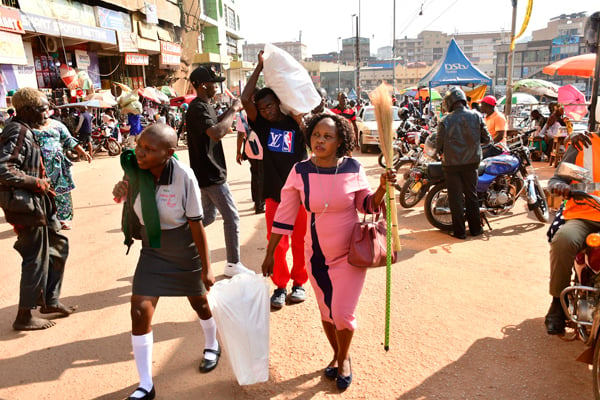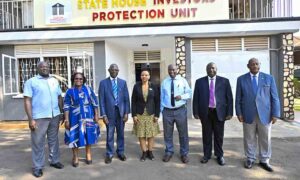The Equal Opportunities Commission (EOC) has asked the government to stop funding top schools that continue to charge excessive school fees.
Ms Susan Nambatya, the EOC research associate, who yesterday spoke at the release of findings of a study on fees charged by government and private schools, named some of the government schools charging high fees as Nabisunsa Girls, Kawempe Muslim Secondary School, Makerere College, Gayaza High Schools, and Budo College.
The findings show that fees in the non-USE schools ranged from Shs450,000 to shs3,000,000 per term, with an average of Shs1, 264,644 across the sampled 40 schools.
“Although the government funds teachers salaries, provides textbooks, and supports infrastructure development in these schools, the high fees remain a barrier for low-and middle-income families,” Ms Nambatya said.
“This raises concerns about the government’s ability to regulate fees in schools that rely on public funds since the high costs limit access to quality education for many students across the country,” she added.
Schools in central Uganda had the highest average fee of Shs2, 258,333, ranging between Shs1, 243,000 and Shs3, 000,000.
Western Uganda had an average fee of Shs913,150, stretching from Shs483,500 to Shs2,020,000, while northern Uganda had an average of Shs490,000, spreading between Shs310,000 and Shs700,000. Eastern Uganda had an average fee of Shs915,712, distributed from Shs450,000 to Shs1,606,000.
The report cites significant regional disparity, with schools in the central region charging the highest fees, well above the national average, with the Commission attributing this to several factors, including better access to resources like modern facilities, qualified teachers, and learning materials.
Similarly, the report says schools in central region dominate national exams and are highly competitive, driving parents to pay higher fees for their children to attend.
In contrast, non-USE schools in northern and parts of eastern and western Uganda faced challenges such as limited funding, poor infrastructure, teacher shortages, and lower community involvement.
Ms Nambatya said these challenges often lead to disparities in academic performance and overall quality of education across the regions.
Based on the disparities, the Commission has asked the government to redirect the funds given to the high-fee charging schools towards more pressing education needs on the ground, saying the big schools can manage themselves.
The fees charged by selected private secondary schools in Uganda vary with no standard guidelines in place.
The fees range from Shs270,000 to Shs3,300,000 per term, with an average of Shs1,005,449 across 49 selected schools.
In western Uganda, the schools charged an average fee of Shs395,500, while schools in central Uganda had the highest average fees of Shs1, 516,783. Northern Uganda’s average fees stood at Shs813,333, while eastern Uganda had an average of Shs562, 824 per term.
The central region had significantly higher fees compared to other regions, well above the national average. Notably, some private secondary schools charge lower fees than non-USE schools.
Although the government introduced a policy to regulate school fees in 2023, its implementation remains weak, allowing the disparities in fees to persist across the country.
The Commission said the disparities in school fees significantly impact student attendance and performance. It also said the high fees and transport costs lead to irregular attendance, particularly for those living far from school.
The Commission said the students may also skip school out of embarrassment if they can’t pay, with girls facing additional challenges of domestic responsibilities and lack of sanitary products.
They said the differences in fees also hinder enrolment for low-income families because the high tuition, along with costs for uniforms and supplies, prevents many from enrolling their children, especially in poorer and rural areas.
The Commission warned that this often results in higher dropout rates, with girls often withdrawn from school due to financial pressures, leading to early marriages and continued poverty
Ms Nambatya said: “Regional imbalances are exacerbated by fee disparities. Urban schools in wealthier areas provide better education, while rural regions, especially in the north and east, face high fees and limited resources.”
Mr James Mugisha, the EOC commissioner for Compliance and Enforcement, said they recently met with the Ministry of Education to address the issue of fee extortion by both private and government-aided schools.
He said a policy on school fees is being developed but emphasised the need for immediate strategies to address the problem while awaiting the policy’s implementation.
Several school heads did not respond or declined outright to our inquiries on the charging of high fees while still taking government funds to aid the schools.
But Fr Ronald Okello, the education secretary at the Uganda Episcopal Council, said although they advocate equal opportunities, external pressures lead to the increased fees.
He cited factors such as infrastructure improvements, parental expectations, and the disparity between government funding and the cost of living as contributors to the high fees.
“I do not want to comment on the report I have not seen. But on the issue of school fees, I blame parents who set standards through the board of governors. You find parents dictating the type of diet their children must have as well as performance standards,” Mr Okello said.
“We do not force people to go to our schools. They fight for them because of the better performance that comes at a cost. We always want to give every child an opportunity to study in these schools but the standards our parents set make the schools to charge highly,” he added.
Dr Denis Mugimba, the Education ministry spokesperson, did not respond to our calls.
But he had previously said government-aided schools charging additional fees would need to provide free education or forfeit government funding under the new UPE and USE policy in the offing.
The ministry is negotiating with the foundation bodies of schools like Gayaza and Nabisunsa to ensure compliance with the government’s free education mandate.
“We are in talks with the foundation bodies of these schools and how they should support the government policy of free education if they still want to continue being funded by the government,” Dr Mugimba said last month.



















